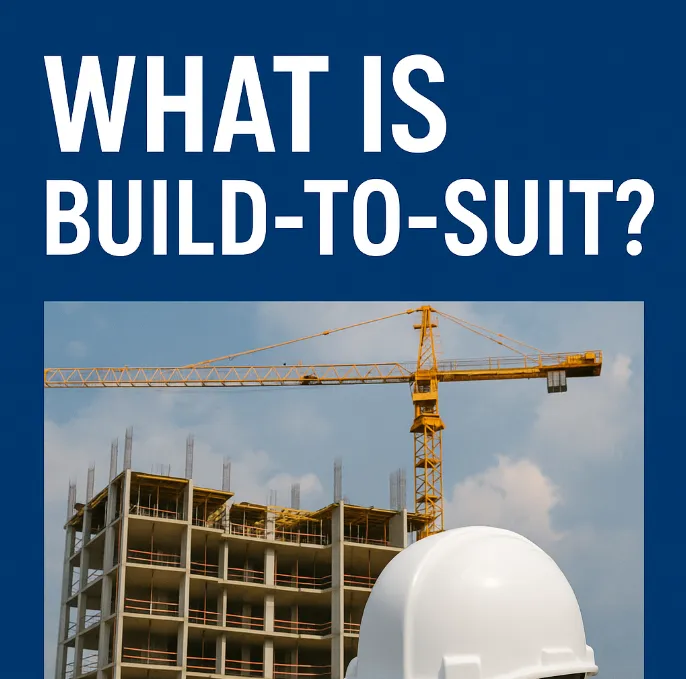
🏢 Build-to-Suit Explained: How Custom CRE Projects Work for Tenants & Developers 🧱
🏢 Build-to-Suit Explained: How Custom CRE Projects Work for Tenants & Developers 🧱
🔑 What Is a Build-to-Suit? Custom Commercial Real Estate Projects for Business Owners 🏗️
🏗️ Build-to-Suit: What It Means and Who It’s For
In commercial real estate, Build-to-Suit (BTS) is a powerful strategy where a property is custom-designed and constructed to meet a specific tenant’s requirements. Instead of retrofitting an existing space, BTS developments allow business owners to occupy a tailor-made facility from day one—typically under a long-term lease agreement.
🔍 What Is Build-to-Suit?
Build-to-suit is a development approach where a landlord, developer, or investor constructs a commercial property based on a tenant’s exact specifications. These projects are often structured as pre-leased agreements where the tenant commits before construction begins, minimizing vacancy risk for the owner.
BTS deals are common for:
· Medical and dental offices
· Corporate headquarters
· Industrial or logistics warehouses
· Quick-service restaurants (QSR)
· Retail anchors in growing suburban corridors
🏢 Who Benefits from Build-to-Suit?
📈 Tenants
· Customization: Everything from square footage to layout, power requirements, and branding can be tailored.
· Operational Efficiency: Layouts are optimized for workflow, inventory, or customer traffic.
· Cost Predictability: Long-term leases often include fixed or structured rent increases.
· Brand Consistency: BTS helps franchises and chains replicate successful designs.
🏗️ Developers & Investors
· Stable Returns: Long-term leases (10–20 years) offer reliable cash flow.
· Reduced Risk: Pre-leased agreements reduce speculative development risk.
· Increased Property Value: Single-tenant, long-term assets appeal to 1031 exchange and net lease buyers.
🛠️ Key Considerations in Build-to-Suit Deals
· Site Selection: Proximity to customer base, traffic counts, and zoning are critical.
· Financing Structure: Developers often finance the construction using construction-to-perm loans or private equity.
· Lease Terms: These deals often include triple net (NNN) leases where tenants cover taxes, insurance, and maintenance.
· Exit Strategy: Many developers sell BTS assets post-stabilization to capital markets or REITs.
🧩 Build-to-Suit vs. Speculative Development
Feature
Build-to-Suit
Speculative Build
Tenant Secured
Before Construction
After Completion
Risk Profile
Lower for Developer
Higher Risk
Customization Level
High
Limited
Lease Terms
Long-term, NNN
Market-dependent
🚀 Is Build-to-Suit Right for You?
If you’re a business owner tired of retrofitting old buildings, or a developer looking for secure long-term returns, build-to-suit may be the strategy to explore. In fast-growing regions like Katy and Fulshear, BTS can provide a competitive edge in a tight CRE market.
💬 Need help structuring a BTS project? Let’s talk about location, financing, and design options tailored to your vision.
https://www.houstonrealestatebrokerage.com/
https://www.houstonrealestatebrokerage.com/houston-cre-navigator
https://www.commercialexchange.com/agent/653bf5593e3a3e1dcec275a6
http://expressoffers.com/[email protected]
https://app.bullpenre.com/profile/1742476177701x437444415125976000
https://author.billrapponline.com/
https://www.amazon.com/dp/B0F32Z5BH2
© 2023-2024 Bill Rapp, Broker Associate, eXp Commercial Viking Enterprise Team
